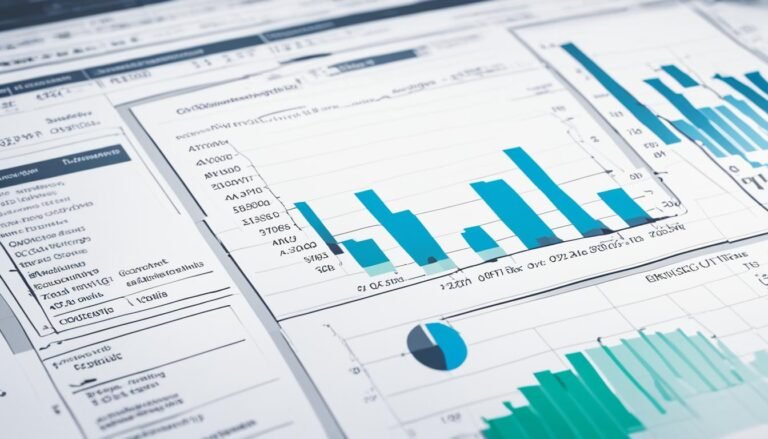Managing Pension Funds: Strategies for Long-term Success
In the domain of pension fund management, the pursuit for long-term success is a complex and multifaceted journey. It involves a careful orchestration of various strategies and methodologies to navigate the ever-evolving financial landscape.
From the nuanced art of diversification to the meticulous science of risk management, each element plays a critical role in shaping the outcomes of pension investments. However, there is one key aspect that often remains elusive yet integral to sustained success.
This elusive element, when harnessed effectively, has the power to set apart thriving pension funds from those struggling to keep pace.
Key Takeaways
- Diversification and risk management are crucial for long-term pension fund success.
- Asset-liability management ensures balance and stability in meeting obligations.
- Compliance and governance standards are essential for regulatory adherence and accountability.
- Strategic investment decisions and performance evaluation drive long-term fund success.
Importance of Diversification
Diversification plays a crucial role in the effective management of pension funds, serving as a strategic mechanism to mitigate risks and enhance long-term returns for investors. Portfolio allocation within pension funds involves spreading investments across various asset classes such as equities, bonds, real estate, and commodities to reduce exposure to any single risk factor. This strategy aims to balance the risk-return profile of the fund, ensuring a more stable performance over time.
Investment strategy within pension funds is closely linked to diversification. By diversifying across different asset classes, geographical regions, and industries, pension funds can reduce the impact of market volatility and unforeseen events on their overall performance. This approach also allows investors to capitalize on opportunities in different sectors while minimizing potential losses from underperforming assets.
Risk Management Strategies
Effective risk management strategies are essential for pension funds to navigate market uncertainties. Diversification plays a vital role in spreading risk across various assets, reducing vulnerability to fluctuations within a single asset class.
Additionally, using hedging techniques can provide a protective layer against volatility, ensuring stability in the fund's performance.
Diversification for Risk
A thorough risk management strategy in managing pension funds involves strategically allocating investments across a range of asset classes to minimize exposure to any single risk factor. Diversification plays an important role in spreading risk and enhancing long-term stability. Here are key aspects to take into account:
- Asset Allocation: By distributing investments across various asset classes such as equities, fixed income, real estate, and alternative investments, pension funds can reduce correlation risk and enhance portfolio optimization.
- Geographic Diversification: Investing in different regions or countries can help mitigate geopolitical risks, currency fluctuations, and economic downturns.
- Sector Diversification: Allocating funds across diverse industries can lower sector-specific risks and provide a buffer against market volatility, enhancing overall risk management strategies.
Hedge Against Volatility
To safeguard pension funds against market turbulence and sudden fluctuations, employing hedging strategies is imperative in maintaining financial stability and protecting long-term investments. Hedging strategies involve taking counterbalancing positions that can help offset potential losses in a portfolio. By using derivatives, such as options or futures contracts, pension funds can mitigate risks associated with market volatility. These strategies aim to reduce the impact of adverse market movements, providing a level of protection to the fund's overall value. Effective risk mitigation through hedging can enhance the fund's resilience during challenging market conditions, ensuring that the pension obligations can be met. The table below illustrates common hedging strategies used for pension fund management.
| Hedging Strategy | Description |
|---|---|
| Options | Provides downside protection |
| Futures Contracts | Locks in future asset prices |
| Swaps | Exchanges cash flows |
| Forwards | Locks in future exchange rates |
Asset-Liability Matching
Asset-liability matching is an important risk management strategy employed by pension funds to align the fund's investments with its liabilities, ensuring a balance between the assets held and the obligations to be met.
This strategy involves matching the duration of assets with the duration of liabilities, a concept known as duration matching. Additionally, pension funds often engage in liability-driven investing (LDI), which focuses on structuring the investment portfolio to meet specific future liabilities.
Market Trend Analysis
In examining the current market trend analysis for pension funds, it is essential to investigate into the intricacies of economic indicators and investment patterns to make informed strategic decisions. Market analysis and forecasting models play a vital role in understanding the dynamics of investment opportunities and global trends. By closely monitoring these factors, pension fund managers can adapt their strategies to capitalize on emerging opportunities and mitigate risks effectively.
| Market Trends | Investment Opportunities | Global Trends |
|---|---|---|
| Equity Market Growth | Diversification Strategies | Technological Innovation |
| Interest Rate Fluctuations | Real Estate Investments | Sustainability Focus |
Analyzing market trends helps pension funds in identifying potential areas for growth and areas of caution. It enables them to align their investment portfolios with the prevailing market conditions, ensuring long-term success and sustainability. By utilizing advanced forecasting models and staying abreast of global trends, pension funds can position themselves strategically in the ever-evolving financial landscape.
Long-Term Investment Planning
Given the thorough market trend analysis for pension funds, the focus now shifts towards formulating robust strategies for long-term investment planning to secure sustainable financial growth. When planning for long-term investments in pension funds, considerations such as investment horizon and risk tolerance play important roles in shaping the portfolio. Here are key aspects to focus on:
- Investment Horizon:
Determining the investment horizon is essential as it helps in selecting appropriate investment vehicles that align with the fund's long-term objectives. Longer investment horizons usually allow for a more aggressive investment approach, considering the potential for higher returns over time.
- Risk Tolerance:
Understanding the risk tolerance of the pension fund is essential in defining the acceptable level of risk that can be taken in the investment portfolio. Balancing risk and return is a delicate process that requires aligning the risk appetite with the fund's long-term goals.
- Portfolio Allocation and Asset Selection:
Strategic portfolio allocation across different asset classes and meticulous asset selection are critical for achieving diversification and maximizing returns while managing risks effectively. The right mix of equities, fixed income securities, real estate, and alternative investments can help in achieving the desired long-term growth while mitigating potential downsides.
Regulatory Compliance Measures
As pension fund managers navigate the intricate landscape of regulatory compliance, three critical points come to the forefront:
- a thorough overview of compliance guidelines,
- staying abreast of reporting requirements updates, and
- strategic tips for audit preparation.
These aspects form the foundation for ensuring that pension funds adhere to regulatory standards and mitigate risks effectively.
Compliance Guidelines Overview
Amidst the complex landscape of pension fund management, a thorough understanding and adherence to compliance guidelines are essential for ensuring regulatory compliance measures are met effectively. Compliance guidelines serve as a blueprint for pension fund managers to navigate the intricate regulatory environment.
To achieve this, the following strategies are pivotal:
- Compliance Training: Continuous training programs guarantee staff are up-to-date with the latest regulatory requirements.
- Risk Assessment: Regular risk assessments help identify potential compliance vulnerabilities and enable proactive mitigation measures.
- Governance Standards: Adhering to robust governance standards enhances transparency and accountability within the pension fund management framework.
Reporting Requirements Update
Exploring the intricate regulatory environment of pension fund management requires meticulous attention to detail, particularly in ensuring compliance with the latest reporting requirements. Funding requirements play a pivotal role in shaping pension fund strategies, necessitating thorough data analysis to meet obligations.
Compliance updates are essential to align with evolving governance practices, ensuring transparency and accountability in fund operations. Regular monitoring and reporting on funding status, investment performance, and risk management are vital components of meeting regulatory standards.
Effective data analysis not only aids in meeting reporting requirements but also enhances decision-making processes for long-term fund sustainability. By staying updated on compliance measures and implementing robust governance practices, pension funds can navigate regulatory challenges and aim for long-term success.
Audit Preparation Tips
Thorough preparation for audits in pension fund management is important to guarantee compliance with regulatory requirements and uphold transparency in fund operations. When preparing for audits, it is essential to focus on internal controls and risk assessment to secure the fund's financial integrity.
Here are three essential tips for effective audit preparation:
- Document Review: Conduct a thorough review of all fund documentation to confirm accuracy and completeness.
- Testing Internal Controls: Evaluate the effectiveness of internal controls in place to mitigate risks and prevent errors or fraud.
- Risk Assessment: Identify and assess potential risks that could impact the fund's financial stability and develop strategies to mitigate them effectively.
Asset Liability Matching
Ensuring proper asset liability matching is a critical component of effective pension fund management. Duration matching is a key strategy within asset liability matching, where the investments' durations align with the expected timing of liabilities. This helps in reducing the risk of a mismatch between assets and liabilities due to interest rate fluctuations.
Liquidity management is another essential aspect, making sure that the fund has enough liquid assets to meet short-term obligations without the need to sell long-term investments at unfavorable times.
A liability-driven investment (LDI) approach is commonly used to manage asset liability matching effectively. This strategy focuses on structuring the investment portfolio in a way that prioritizes meeting the pension fund's obligations, rather than solely aiming for high returns. By adopting an LDI approach, pension funds can better mitigate risks associated with changes in interest rates and market conditions, enhancing long-term stability and sustainability.
Sustainable Investment Practices
As pension funds increasingly recognize the importance of environmental, social, and governance (ESG) criteria, integrating these factors into their investment decisions becomes paramount.
Embracing sustainable investment practices not only aligns with ethical principles but also has the potential to drive long-term financial performance through impact investing, where positive social or environmental outcomes are pursued alongside financial returns.
ESG Criteria Importance
In the domain of managing pension funds, the integration of ESG criteria has become increasingly important for sustainable investment practices due to its potential to enhance long-term financial performance and risk management strategies.
When considering ESG integration within pension fund management, the following points are essential to note:
- Fiduciary Duty: Pension fund managers have a fiduciary duty to act in the best interests of their beneficiaries, and incorporating ESG factors into investment decisions is seen as fulfilling this obligation.
- Sustainable Investing: Embracing ESG criteria aligns pension funds with sustainable investing principles, ensuring that governance standards are met and environmental and social impacts are considered alongside financial returns.
- Risk Management: ESG integration aids in identifying and mitigating long-term risks that traditional financial analysis may overlook, thereby enhancing the overall risk management framework of pension funds.
Impact Investing Benefits
Given the growing emphasis on sustainable investment practices within pension fund management, exploring the benefits of impact investing becomes imperative for aligning financial objectives with environmental and social considerations. Impact investing offers pension funds the opportunity to generate positive social impact while still achieving competitive financial returns.
By incorporating social impact criteria into investment decisions, pension funds can support initiatives that address pressing societal issues such as climate change, income inequality, and diversity. This not only fulfills the fund's responsibility to its beneficiaries and stakeholders but also enhances its reputation as a socially conscious investor.
Additionally, studies have shown that integrating social impact considerations into investment strategies can potentially lead to long-term sustainable financial returns, showcasing the dual benefits of impact investing in pension fund management.
Technology Integration Solutions
Utilizing advanced technological tools and platforms can greatly enhance the efficiency and effectiveness of managing pension funds. In the domain of pension fund management, integrating technology solutions is essential for staying competitive and meeting the evolving needs of stakeholders. Here are three key ways technology integration solutions can benefit pension fund management:
- Automation of Processes: Implementing digital transformation allows for the automation of repetitive tasks such as data entry, calculations, and reporting. This not only reduces the potential for human error but also frees up valuable time for fund managers to focus on strategic decision-making.
- Enhanced Security Measures: Technological innovations offer robust security features to protect sensitive pension fund data from cyber threats. By incorporating encryption, multi-factor authentication, and secure cloud storage, pension funds can safeguard their information and maintain trust with beneficiaries.
- Data Analytics Capabilities: Technology integration provides access to powerful data analytics tools that can offer valuable insights into fund performance, risk assessment, and market trends. By leveraging these analytics, pension fund managers can make informed decisions to optimize returns and mitigate risks effectively.
Performance Monitoring Tools
Integrating performance monitoring tools into the technological infrastructure of pension fund management can greatly enhance oversight and decision-making processes. Performance tracking tools allow pension fund managers to assess the performance of their investments accurately. By utilizing these tools, managers can explore into various metrics such as return on investment, risk exposure, and portfolio diversification. This detailed analysis enables them to make informed decisions to optimize the fund's performance and mitigate risks effectively.
Benchmark comparison is another important aspect facilitated by performance monitoring tools. Fund managers can compare the fund's performance against relevant benchmarks, such as market indices or peer funds. This comparison provides valuable insights into the fund's relative performance and helps in evaluating whether the fund is meeting its objectives and targets. Additionally, benchmarking assists in identifying areas for improvement and strategic reallocations to enhance the fund's overall performance.
Crisis Response Preparedness
Effective crisis response preparedness is crucial for pension fund managers to navigate unforeseen challenges and safeguard the fund's assets. In times of crisis, having a well-thought-out strategy can make a significant difference in minimizing potential damages.
Here are three key elements to contemplate when preparing for crisis response:
- Establish Clear Communication Channels: Make sure there are predefined communication protocols in place to disseminate information effectively during a crisis. This includes internal communication among team members, as well as external communication with stakeholders, regulators, and the media.
- Conduct Regular Scenario Planning: Engage in scenario planning exercises to anticipate potential crises and develop response strategies. By simulating various crisis situations, pension fund managers can better understand the risks they face and be prepared to act swiftly when a crisis emerges.
- Implement Robust Risk Evaluation Techniques: Utilize advanced risk evaluation techniques to identify vulnerabilities within the fund's operations and investment strategies. By proactively evaluating risks, pension fund managers can implement mitigation measures and strengthen the fund's resilience to potential crises.
Conclusion
Daunting management of pension funds requires a careful balance of various elements:
- Diversification
- Risk management
- Market trend analysis
- Long-term planning
- Regulatory compliance
- Sustainable investment practices
- Technology integration
- Performance monitoring
- Crisis response preparedness
Ironically, while these strategies may seem challenging and intimidating, they are essential for long-term success in the pension fund industry. By implementing these measures effectively, pension funds can navigate challenges and achieve sustainable growth in the ever-changing financial landscape.







